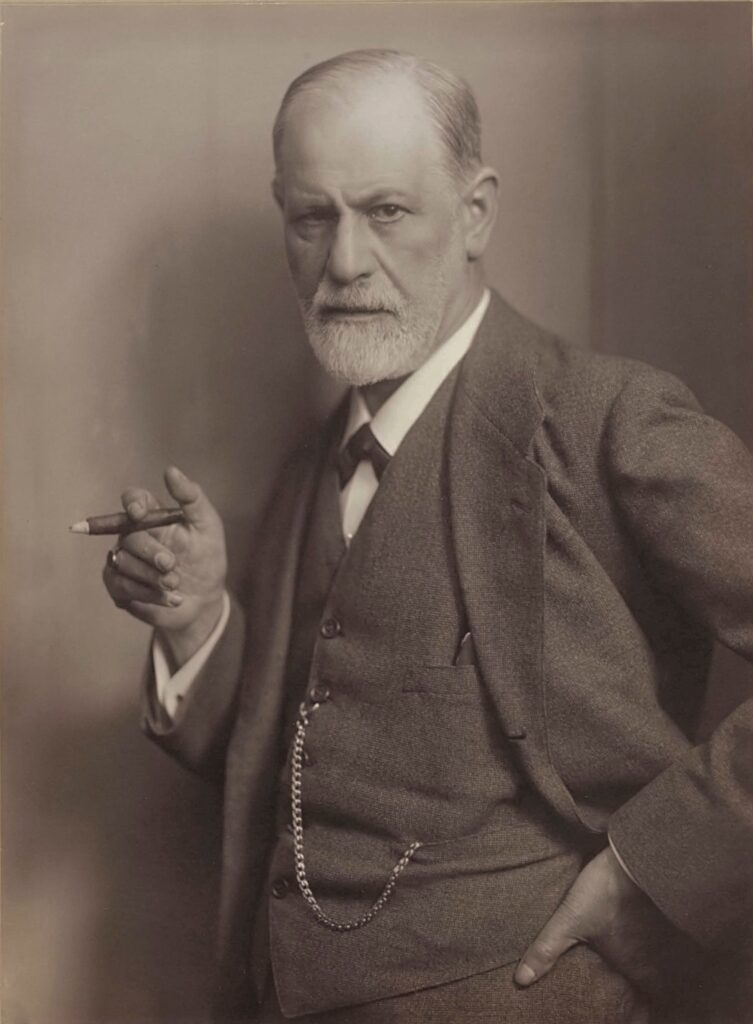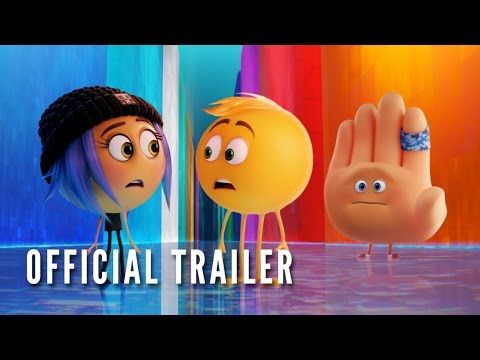
Have you ever been so captivated by a performance that you completely forgot you were watching an actor on a screen? It’s that magical moment when a character feels so genuinely real and convincing, their actions and emotions resonating deep within you, making them leap right out of the digital ether or off the stage. This incredible connection is often the hallmark of truly brilliant acting, creating a bond where interest and concern for a fictional persona become almost indistinguishable from our feelings for real people.
But what exactly sparks that connection? What visual components or aspects of a character—beyond just their physical features—make them truly appealing? It’s not just about what they look like; it’s also profoundly about how they act, their unique personality, and the rich tapestry of their history. This powerful ability to appeal to us, the audience, from their performance to the relationship they establish with us, is a critical ingredient in how we associate with and care for a character.
Yet, this quest for ultimate realism in storytelling, especially with today’s advanced visual effects and AI, introduces a fascinating paradox: the Uncanny Valley. This concept describes a point where things become so incredibly close to being human, but not quite perfect, that instead of feeling more appealing, they become unsettling, even disturbing. Join us as we explore nine incredible instances where actors and groundbreaking technology have either brilliantly navigated this delicate balance or, in some cases, stumbled right into its eerie depths.

1. **The Art of Character Appeal: Making the Fictional Real**When we talk about a character having ‘appeal,’ we’re really touching on their charisma, much like an actor’s own magnetism. It’s that undeniable quality that makes a character, whether hero or villain, feel profoundly real and convincing to us. This sense of captivation doesn’t just stem from their physical design or the composition of their pose; it’s intrinsically linked to their actions and deeds within the storyline, and how they communicate both within their narrative and directly to us.
To truly establish this deep connection, several key aspects of a character must shine through. Their specific role in the narrative and their performance are paramount, as is how they articulate their thoughts and feelings. A well-defined personality, individual traits or skills, their distinctive attire, and a compelling biography or backstory all contribute significantly to their relatability. These are the elements that collectively help us forge a genuine bond with these fictional individuals.
Consider how some of the most memorable characters across film and television have harnessed these elements. They draw us in not merely with their appearance, but with the depth of their being, their motivations, and their journey. It’s why we forgive their flaws, care about their struggles, and trust in their intentions, even when they are antagonists or monstrous figures. The appeal is critical for audience association, creating both interest and profound concern.
This principle holds true for both live-action performances and animated creations. The ability to make a character, whether human or not, resonate with an audience is a testament to the meticulous crafting of their essence. It’s about building a persona that transcends its fictional origins, becoming something tangible and emotionally resonant in the minds of viewers, making them feel absolutely genuine and believable.
Read more about: Jane Fonda at 88: Unpacking a Transformative Legacy of Cinematic Brilliance, Fearless Activism, and Enduring Grace
2. **Sigmund Freud and the Roots of the Uncanny**The concept of the “uncanny” has a rich, deep history that extends far beyond the realm of robotics and modern visual effects. Its literary and psychological origins trace back to an 1816 tale by T.A. Hoffmann, “The Sandman,” which explores a young student’s descent into madness after falling in love with a robot. This foundational narrative laid the groundwork for a profound exploration of what makes something simultaneously familiar and unsettling.
Fast forward a century, and Sigmund Freud delved into this phenomenon in his influential 1919 paper, “The Uncanny” (Das Unheimliche). Freud’s theory wasn’t abstract; it was firmly rooted in everyday experiences and the aesthetics of popular culture. He meticulously explored what is frightening, repulsive, and distressing, connecting these feelings to deeply ingrained psychological processes rather than just surface-level discomfort.
Freud’s essay is a fascinating journey, beginning with an exploration of the etymology of the German words ‘heimlich’ and ‘unheimlich’—translating roughly to ‘homely’ and ‘unhomely.’ He meticulously details their uses in dictionaries and across different languages, revealing how something that is familiar and old-established in the mind can become alienated through repression, thus becoming uncanny. It’s “something which is familiar and old-established in the mind and which has become alienated from it only through the process of repression.”
The second part of Freud’s paper ventures into concrete examples that embody this uncanny feeling. He discusses the horrific concepts of inanimate figures coming to life, the unsettling nature of severed limbs, the spectral presence of ghosts, and the disturbing image of the double figure, or doppelgängers. These elements, drawn from art, literature, and cinema, collectively illustrate how the familiar, when twisted or subtly altered, can evoke profound discomfort and even terror within us. When something feels familiar but is not quite right, it becomes deeply disturbing.

3. **Masahiro Mori’s Uncanny Valley Hypothesis: The Robotic Revelation**While Freud laid the psychological groundwork, the specific concept of the “Uncanny Valley” as we discuss it in the context of human-like figures was first identified by robotics professor Masahiro Mori in 1970. Mori’s work initially focused on prosthetic limbs, where he observed a peculiar human reaction: if the prosthetics were too realistic, people tended to recoil. He noted that as artificial entities became more human-like, our positive emotional response increased, but only up to a point.
There was a critical threshold where, if the human traits were pushed too far—so close that you couldn’t quite spot the difference, yet something was subtly off—they became uncanny. This is the precise moment when discomfort and revulsion set in. Mori described this phenomenon as a “range of appearances, mannerisms, and/or behaviors of a humanoid figure that are subtly different from human and thereby cause feelings of discomfort such as fear or revulsion.”
It took nearly eight years for Mori’s discovery to gain international attention, largely because it was linked to Freud’s earlier, profound essay on “The Uncanny.” This connection solidified the term and provided a deeper, philosophical context for what Mori observed empirically. The “uncanny valley” is depicted as a distinct drop in a graph, representing this negative emotional response towards entities that seem “almost” human. Critically, movement amplifies this emotional response, making a still, almost-human figure less unnerving than one that moves almost, but not quite, like us.
Why do we experience this profound unease? Mori and later theorists propose three possible reasons. Firstly, it could be tied to mate selection: we instinctively reject the humanoid as a possible partner. Secondly, it might be mortality salience, where the almost-human figure subtly reminds us of our own mortality. Lastly, it could be a violation of human norms, where we perceive the situation as a human doing a terrible job at acting like a normal person, triggering a sense of judgment and unease. Passing through this uncanny valley has become a significant challenge that the movie and game industries have grappled with for decades.

4. **Tom Hanks: A Master of Connection, Navigating Digital Realism**Tom Hanks stands as a towering figure in cinema, renowned for his ability to embody characters with profound humanity and relatability. His frequent collaborations with director Robert Zemeckis have often placed him at the forefront of cinematic innovation, exploring the boundaries of storytelling and visual effects. Zemeckis himself, a director with a reputation for experimenting with groundbreaking VFX in films like *Who Framed Roger Rabbit?* and *Back to the Future*, has a fascinating relationship with the uncanny valley, one that often involves Hanks.
Their iconic 1994 collaboration, *Forrest Gump*, presented Hanks as a “man of low IQ and high loyalty.” The film, a “Boomer-glorification fantasy,” became a massive hit and an Oscar winner, with Hanks’s performance being central to its enduring appeal. Despite its later “reputation for uncoolness,” the raw, convincing nature of Hanks’s portrayal of Forrest resonated deeply, making audiences feel a profound connection to a character navigating a tumultuous 20th century. His ability to make the improbable feel utterly real is a testament to his craft.
However, Zemeckis’s journey into the digital realm also led him to the Uncanny Valley with *The Polar Express*. Produced via motion-capture animation, which some called “stop-motion’s zombie twin,” the film initially garnered mixed reactions due to its digitally rendered human characters. Yet, paradoxically, it eventually “became a Christmas classic,” repeatedly rereleased in IMAX and seen by countless children. This suggests that while the visual effects may have initially skirted the uncanny, the film’s narrative power and Hanks’s voice performance helped it transcend those early discomforts for many viewers, especially younger generations who might be “more acquainted with cgi and robots.”
Now, twenty years later, Hanks and Zemeckis reunite for *Here*, a film that explicitly tackles the challenges of AI de-aging. The movie aims to depict Hanks’s character, Richard Young, across his entire adult life, from his 20s to his 80s. While Zemeckis himself notes, “No amount of CGI can make a convincing teenager out of 68-year-old Hanks,” the generative AI tool Metaphysic Live was used for “real-time hyperreal faceswap” to make him look like a 20-year-old. The director focuses heavily on the “delivery and the voices of the actors to ensure it fits the characters at different ages,” attempting to bridge the gap between visual alteration and authentic performance.
Intriguingly, while the film undeniably ventures “back in that uncanny valley again,” some viewers find that “this time, the effect isn’t so disconcerting.” This suggests that even with “obviously digital-heavy production” and de-aging tech that “cannot make a convincing teen out of Tom Hanks,” the emotional directness of the film, coupled with Hanks’s profound acting, allows the “illusion that knows it’s an illusion” to still convey touching emotions. It seems Hanks’s innate ability to make us care, even amidst technological imperfections, helps audiences navigate the digital uncanny.
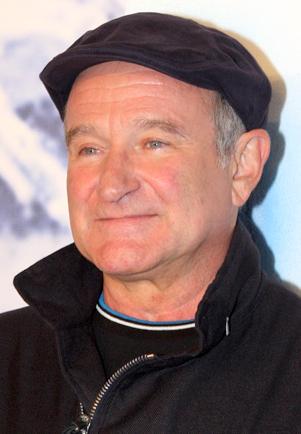
5. **Robin Wright: Evolving Performances and the Digital De-Aging Frontier**Alongside Tom Hanks, Robin Wright has consistently delivered powerful and nuanced performances, creating characters that stick with audiences long after the credits roll. Her work with Zemeckis in *Forrest Gump* as Jenny, Forrest’s “more turbulent-living crush,” showcased a complex character who “drops out, protests, plays music, gets AIDS, and dies.” Wright’s portrayal imbued Jenny with a raw, often tragic humanity, making a character with a tumultuous life journey feel incredibly real and deeply affecting, even as she represented a different facet of the “Boomer” generation’s experiences than Forrest.
In *Here*, Wright once again shares the screen with Hanks, portraying Margaret, Richard Young’s teenage sweetheart who becomes his wife. This role similarly spans decades, presenting the unique challenge of depicting her character across different life stages. For her portrayal, the film employs advanced generative AI de-aging technology, much like with Hanks. The creative team took a unique approach, utilizing “real footage of her from when she was 19 as the reference material” for her younger appearance, aiming for an authentic and seamless transformation.
The decision to use actual archival footage of Wright from her youth as a reference point highlights the industry’s ongoing pursuit of a perfect digital likeness that avoids “that uncanny valley feeling.” It’s an effort to ground the digital transformation in genuine human material, hoping to make the AI-generated younger version feel less artificial and more like a true echo of her past self. This level of detail in the de-aging process underscores the ambition to make the actors’ journey through time as believable as possible.
However, successfully pulling off de-aging, especially across such significant age spans, remains a formidable task. While the technology can achieve “scarily real” results, the core of a convincing performance still relies on the actor’s ability to maintain continuity in character and voice, which Zemeckis emphasized. Wright’s long-established on-screen presence and her capacity to convey deep emotionality are crucial in making her digitally altered appearances resonate, drawing viewers into the story rather than distracting them with the effects.
Ultimately, Robin Wright’s involvement in *Here* serves as a fascinating case study in how actors adapt to and even enhance cutting-edge technology. Her compelling performances, rooted in rich character development, are vital in allowing audiences to accept these digital manipulations. She helps bridge the gap between the astonishing visual effects and the human story at the heart of the film, ensuring that even as her visage is digitally transformed, her character’s journey feels consistently genuine and profoundly convincing, rather than falling prey to the unsettling nature of the uncanny valley.

6. **Ian Holm: A Digital Resurrection Divides Audiences**The quest for ultimate realism in cinema took a controversial turn with *Alien: Romulus*, where director Fede Álvarez embarked on a digital resurrection. The film decided to bring back a character using the CGI likeness of the late Ian Holm, who famously portrayed the android Ash in the original *Alien*. This creative decision quickly sparked a significant debate among viewers, highlighting the tightrope walk involved in digital character creation. Many reactions online, though acknowledging the intent, expressed discomfort with the final result.
Ian Holm, who passed away in 2020, never had the chance to reprise his android role in the *Alien* franchise. Ridley Scott, a key figure in the series, alongside Álvarez, felt it was only fair to honor Holm by featuring his likeness for the new android character, Rook. They saw it as a deserving return for an actor they both considered the best android portrayal in the franchise, especially when other actors like Michael Fassbender and Lance Henriksen had multiple appearances. This thoughtful motivation aimed to pay homage to a beloved figure.
To achieve this, the filmmakers involved Holm’s widow, ensuring the family’s consent before proceeding. They cast a British actor, Daniel Betts, who lent his voice and performance to the role, which was then combined with animatronics and sophisticated CGI to create Rook’s appearance. Álvarez defended this approach, likening it to actors using extensive makeup and prosthetics for a role. He also pointed out the immense effort involved, noting that such a complex digital process is far from a cheap shortcut, requiring a team of around 70 people.
Despite the respectful intentions and advanced technology, the outcome was met with mixed reviews regarding its effectiveness. Numerous online comments described the CGI Ian Holm as “ghoulish” or “not convincing,” with some calling it a “poor creative choice” that detracted from the film. This illustrates the persistent challenge of the Uncanny Valley: even with the best intentions and cutting-edge tech, an “almost human” digital recreation can still evoke discomfort, proving that audience perception remains a fickle beast.
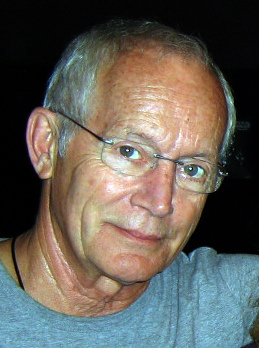
7. **Lance Henriksen and Michael Fassbender: Androids That Truly Connected**While the digital resurrection of Ian Holm sparked debate, the *Alien* franchise has a rich history of android portrayals that have deeply resonated with audiences, showcasing how live acting can transcend the “almost human” barrier. Actors like Lance Henriksen and Michael Fassbender have repeatedly delivered compelling performances as synthetic beings, demonstrating an innate ability to make these non-human characters feel profoundly real and relatable without unsettling viewers. Their nuanced approaches provide a fascinating contrast to the challenges of pure digital recreation.
Lance Henriksen’s iconic performance as Bishop in *Aliens* and later films is a masterclass in making an android both functional and empathetic. Bishop, initially viewed with suspicion due to the trauma caused by Ash, gradually earns the trust of the human characters and the audience alike. Henriksen imbued Bishop with a quiet dignity, intelligence, and even a form of loyalty that made him incredibly appealing. His precise movements and calm demeanor, coupled with moments of unexpected warmth, allowed audiences to forge a genuine connection with a character who was explicitly not human.
Then there’s Michael Fassbender, who brought layers of complex emotion and intellect to his portrayals of David and Walter in *Prometheus* and *Alien: Covenant*. Fassbender’s David was a chilling yet captivating antagonist, whose evolving sentience and malevolent curiosity pushed the boundaries of what an android could be. Later, his portrayal of Walter offered a more protective and empathetic synthetic, showcasing a different facet of AI. Fassbender’s subtle expressions and controlled physicality allowed these characters to be undeniably artificial yet deeply engaging, drawing viewers into their existential struggles rather than alienating them.
The success of Henriksen and Fassbender lies in their masterful acting. They didn’t just look the part; they *inhabited* the roles, using their human artistry to convey the internal logic and evolving sentience of their synthetic characters. Their performances allowed the audience to connect with the character’s purpose, personality, and even their inner turmoil. This human element is crucial, reminding us that even in the realm of advanced robotics and AI, a powerful, live performance can bridge the gap of the Uncanny Valley, making the fictional feel authentically convincing.

8. **AI in Animation: Bypassing the Valley, But Creating New Gaps**The world of animation is increasingly embracing artificial intelligence, a shift that offers both exciting possibilities and contentious challenges. Unlike live-action films, which often grapple with the “uncanny valley” when trying to make digital humans look perfectly real, animation finds itself in a somewhat advantageous position. As Alex Hirsch, creator of *Gravity Falls*, pointed out, “It’s easier to replicate something that looks unreal than it is to replicate something that looks real.” Since animation inherently deals with non-realism, AI can blend in more seamlessly, especially with cartoon characters, animals, or fantastical beings.
AI tools are being rapidly adopted in various stages of animated production, primarily for efficiency and cost reduction. They are proving invaluable for speeding up initial character design and visual development, helping studios achieve “proof of concept faster” during the greenlighting process. Producers can leverage AI to generate numerous visual ideas quickly, replacing a large team of storyboard artists with a single artist curating AI output. This rapid iteration and perceived cost-effectiveness are highly appealing to studios aiming to streamline their workflows and save resources.
However, this technological advancement comes with a significant downside, particularly for the artists themselves. Many animators express deep concern about the unoriginality of AI-generated images, which they argue are merely amalgams of existing artwork “scraped” from the internet without consent. This practice raises serious ethical questions about copyright infringement and the potential for studios to end up “imitating existing characters rather than inventing something truly new.” Hirsch eloquently articulated this fear, stating that “The point of art is a human communicating a feeling to another human, not an algorithm amassing a slurry of thoughts other humans have had before and reproducing a generic, predetermined outcome.”
The recent Hollywood strikes brought these AI concerns to the forefront, with differing outcomes for various guilds. While the Writers Guild of America and SAG-AFTRA secured crucial protections against AI misuse, including consent for likeness and compensation, the Animation Guild’s contract proved less robust. Animators expressed disappointment, as their agreement didn’t prevent studios from insisting on AI use or from training models on artists’ work without opt-out options. This has led to anxieties about job displacement, with some studios reportedly reducing visual development teams by relying on AI image generators.
Further complicating AI’s role in animation is the issue of copyright. The U.S. Copyright Office currently rules that AI-generated material cannot be granted copyright unless a human author contributes “sufficient expressive elements.” This creates a hurdle for studios, as a lack of clear copyright ownership over animated characters developed with AI could jeopardize revenue streams from merchandise and open them up to legal challenges. Consequently, while AI offers speed and cost savings, its full integration into creating final animated features remains uncertain due to these significant legal and creative ambiguities.
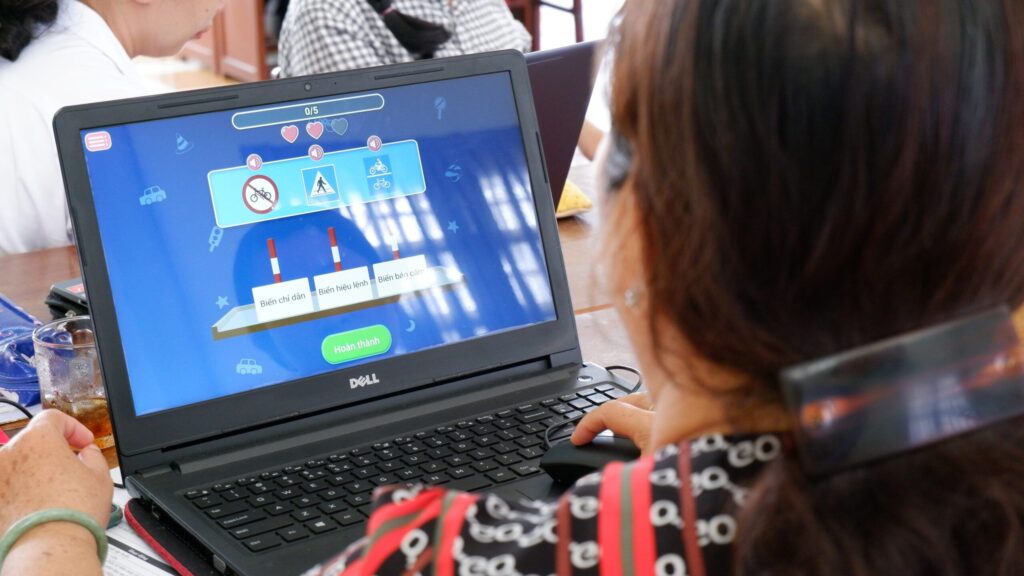
9. **The Evolving Frontier: Generational Gaps and the Future of the Uncanny Valley**The relentless pursuit of realism in visual media, particularly in film and games, has consistently brought creators face-to-face with the enduring challenge of the Uncanny Valley. This peculiar psychological phenomenon, where “almost human” figures elicit discomfort, has dictated how far technology can push the boundaries of digital representation. However, an intriguing concept gaining traction suggests that our perception of this valley might not be universal, proposing a “generational uncanny valley” where different age groups react to digital humanoids with varying degrees of unease.
It’s hypothesized that younger generations, who have grown up immersed in a world saturated with CGI, video games, and humanoid robots, may be far more accustomed to and accepting of digital beings. Their constant exposure might have desensitized them, making the “almost human” less jarring and more normalized. This could explain why films like *The Polar Express*, initially met with uncanny reactions from older viewers, found a lasting place as a Christmas classic, especially among children “more acquainted with cgi and robots.” Similarly, some viewers find that the de-aging in *Here*, while “obviously digital-heavy production,” is “not so disconcerting” this time around.
Ultimately, navigating the Uncanny Valley successfully often boils down to a delicate balance between technological prowess and the enduring power of human performance. Even with groundbreaking generative AI and sophisticated VFX, the ability of actors to convey authentic emotion and build a genuine connection with the audience remains paramount. As seen with Tom Hanks in *Here*, an “illusion that knows it’s an illusion” can still resonate deeply if the emotional directness and the actor’s profound skill are there. It’s about helping viewers accept the artificiality, rather than being distracted by it.
Looking to the horizon, the continued evolution of AI de-aging, digital resurrections, and AI’s integration into animation presents a multifaceted future. The technical advancements will undoubtedly continue to create “scarily real” visuals, but the industry must also grapple with the ethical implications of using deceased actors’ likenesses, ensuring consent and respect. Furthermore, the debate around copyright, originality, and the preservation of human creativity in the face of AI automation will shape how these technologies are ultimately utilized in storytelling.
The journey through the Uncanny Valley is far from over. As filmmakers and game developers continue to push the boundaries of what’s possible, the conversation shifts from merely avoiding discomfort to consciously crafting digital experiences that enhance, rather than detract from, the human story. The goal is to harness technology to forge even deeper connections with characters, whether they are live actors, digital creations, or a seamless blend of both, ensuring that the magic of storytelling continues to captivate and move us, without ever becoming truly uncanny.
So, whether it’s an actor making you forget they’re just playing a part, a digital resurrection sparking a debate, or an animated character crafted with the help of AI, the entertainment world is constantly pushing the envelope. It’s a thrilling, sometimes unsettling, ride through what it means for something to be truly “real” on screen. One thing is for sure: our fascination with these incredibly convincing characters, and the technology that brings them to life, is only going to grow.

